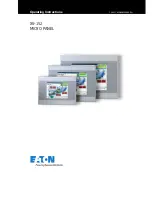
VISION-LITE® / VISION-LITE II®
PROCESSING GUIDELINES
MAY 2022
14
The glass must be clean immediately after edge working (whatever the process uses) to avoid polluted
drying marks to remain on the coating.
In case VISION-LITE® range is submitted to several processing
steps (edge w dr…) each of them followed by washing, it is recommended to pass the
cut sizes in the same direction for each washing phase (to avoid possible generation of multiple crossed
scratches).
We recommend the use of the following installation. If the washing installation differs from the one
described here, we recommend that tests be carried out to check the washing quality (traces, rings, dust,
etc.) and to ensure that the installation does not damage the coating. Please contact your local TSM:
•
Pre-washing area:
• Prewash ramp followed by one pair of cylindrical brushes
• Tap water between 30 and 40°C, preferably close to 40°C, without any detergent
• The prewash ramp is particularly important for the removal of the glass dust and splinters
created during the edge-working process
•
Washing area:
• 2 pairs of cylindrical brushes
• demineralised water
• pH value comprised between 6 and 8;
•
Rinsing area:
• Demineralised water at room temperature
• Maximum conductivity 20
μ
S/cm
• pH value comprised between 6 and 8;
•
Brushes:
• Flexible (soft) clean polyamide bristles
• Maximum diameter of 0.2 mm, 20 - 40 mm long.
• Make care that all the brushes are perfectly clean and regularly maintained. Any hard brushes
must be lifted;
• Compatible rotation speed with soft coatings
3.5. WASHING
Generally carried out using manual cross belts to achieve arrissed edges (100 – 120 grit beltsare
recommended).
•
The top belt should run downwards to minimise grit deposited on the coated surface;
•
Horizontal roller backstops can be fitted to ensure consistent pressure and arriss width;
•
The glass should be handled (with glass dust free gloves) at the edges to avoid damaging
the coating.
It is possible to grind the coated glass on vertical, CNC and double edger machines provided that the
handling instructions are observed and adaptations of the machines are made (if necessary, contact
your local Technical Support Manager). For double-edger and vertical machines, cleanliness and perfect
synchronization of the pressure belts must be checked.
The drilling of coated glass can be performed provided that the handling instructions are observed
and adaptations of the machines are made (if necessary, contact your local Technical Support Manager
- TSM). For special glazing application (e.g. spider glass) the coating may have to be placed on the
conveying rollers. In such a case,
it is recommended to protect the coating with a low tack plastic film.
3.4.1. Manual Edge Working
3.4.2. Automatic Edge Working
3.4.3. Drilling







































